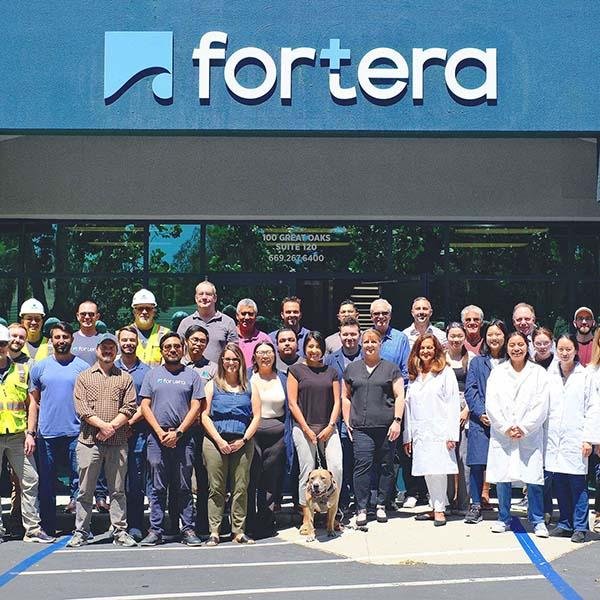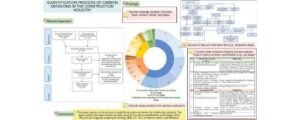The leading upshot of the announcement is the tie-up of 85 million dollars in the Series C financing round of Fortera, which will provide a significant reshaping of the cement industry’s ecological footprint by introducing new factory facilities with these technologies. The main goal of these investments will be to speed up the global deployment of innovative findings ant carbon emissions of the cement-manufacturing process. This critical capital was availed at a time when sectors associated with hard-to-abate technologies faced intensified demands for carbon reduction without recourse to verhogen ontwikkelingsskosten of production operations.
Fortera’s ReCarb® technology, which is unique and has attracted public attention, is a practical guide on how to proceed with no emissions. Instead of asking cement makers to build new plants, this design inserts itself in the current plant and uses the available feedstocks. The Redding ReCarb cement plant continued its operations by applying this kind of integration, which directly captures the CO₂ emissions generated in the production process, and subsequently converts these captive emissions into ready-mixed cement products with low carbon content.
Both veterans and fresh faces were on board for the funding round that reshaped Fortera’s investor roster. The previous backers, Khosla Ventures and Temasek together with newcomers reaffirmed their faith in Fortera vision by involving themselves in this eighth round of financing. Alumni Ventures, Wollemi Capital, Presidio Ventures and the French conglomerate Saint-Gobain have all joined as first-time investors in the health and sustainability project, thus extending Fortera’s funding support network. It seems like the company is in a good condition to realize its ambitious plan, considering the broad range of backing it has received.
The impact of the climate-warming potential of Fortera’s technology is inarguable. Up to 70% less CO2 production per ton as opposed to common cement is what the ReAct® green cement brags about. The point becomes clear when one thinks of the fact that, on average, the production of a ton of standard cement releases almost one ton of CO2 into the atmosphere. The cement sector, being responsible for 7-8% of the total carbon emissions globally, is a significant sector for decarbonization efforts to be realized.
The plan is to launch full-scale ReCarb factories that would turn more than 165,000 tons of CO2 emissions into minerals and produce 375,000 tons of low-carbon cement every year. These plants can be seen as a carbon mitigation solution that is long-term, visible, and direct, as they literally take the carbon from air and store it in mineral form, thus helping in resetting the most emission-driven industrial sector in the world. In fact, through that, Fortera demonstrates a grounded model of more sustainable construction, where the project captures carbon that would otherwise be released into the atmosphere and reuses it.
The company exhibited its technology during the construction of the Business, Technology, and Engineering Building at Simpson University in March 2025; they provided low-carbon cement for the structure. This tangible illustration of their idea underlines their product’s commercial readiness. Additionally, they have formed constructive partnerships that lead them to a greater market reach, demonstrated by their collaboration with Sumitomo Corporation through which they introduced the technology in Asian markets that was announced in December 2024.
Observers of the industry have told that, what distinguishes the Fortera way is the practicality and the value for money. In place of announcing a visionary alternative that requires full replacement of infrastructure, the company offered retrofit compatible technology that can be installed in established cement facilities. This pragmatic attitude is likely to facilitate the sector in adopting rapidly this technology instead of the usual resistance that the longer-standing factories uphold due to low-profit margins and capital-intensive operations.
Greg DiCosola, who assumed the Vice President of Capital Project Execution in January 2024, is an asset to the company through his engineering, procurement, and construction expertise, which would streamline the process of achieving the scaling-up of the firm’s operations effectively. His role could turn out to be the key as Fortera negotiates the difficulties of building up multiple factories concurrently.
According to the latest funding, it is presumably expected that then the company will be finished with the project financing for the additional ReCarb plants which also gives space for technology to be continually advanced. The anticipated growth in the cement sector in the following years, habitually, despite the environmental concerns, means there has to be production so much less carbon intensive and not underperformance or cost-saving. and thus these innovations are a step in the right direction to make construction needs and environmental demands meet in an industry that has been looking for possible decarbonization paths for a long time.







